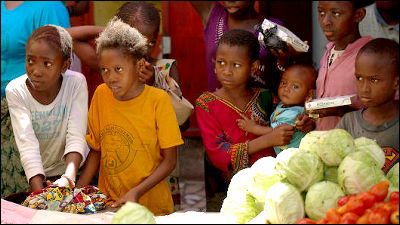Information that should be known at a minimum about "Influenza A (H1N1)" and a reliable source on the Internet Summary
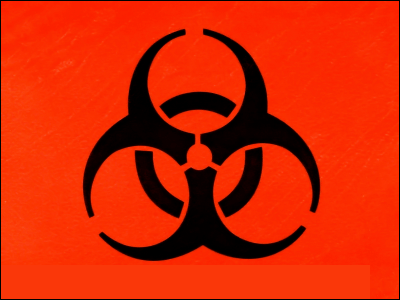
The Ministry of Health, Labor and Welfare issued in December 2005H1N1 influenza countermeasures action plan, It is estimated that 25% of the total population in Japan will suffer from H1N1 influenza, estimating that the number of patients visiting medical institutions will be about 13 million to about 25 million (intermediate value about 17 million) If the Asian influenza, etc, which had prevailed in the past was set to moderate (0.53% fatality rate), the upper limit of the number of hospitalized patients is about 530,000, the upper limit of the number of deaths is about 170,000, and the famous Spain If the influenza is severe (fatality rate 2.0%), the upper limit of the number of hospitalized patients will be about 2 million and the maximum number of deaths will be about 640,000.
Also, the PDF file published by the Tokyo Chamber of CommerceNew Influenza countermeasures guidelines for small and medium enterprises - To protect our lives and to get through bankruptcies ~"According to the pandemic of the H1N1 influenza, there is a possibility that business may be discontinued for several weeks to several months, and SMEs face the risk of" bankruptcy crisis ", so whether to prepare in advance The possibility of bankruptcy is expected to change greatly.
It is not too late to take measures from now, so I brought together various information sources.
Ministry of Health, Labor and Welfare
On the following page, it is updated from now on which phases WHO is declaring and what stage it is in Japan. If you can not keep watching lots of pages, you can get the minimum information if you just look at the following page for the time being. Most cases are released late than general coverage, but the information seems to be accurate as much.
Ministry of Health, Labor and Welfare: Health: H1N1 influenza countermeasure related information
http://www.mhlw.go.jp/bunya/kenkou/kekkaku-kansenshou04/index.html
The answers to frequently asked questions are also summarized below. Originally for public health centers, "What is the H1N1 influenza?" "Is the pandemic started?" "Is it possible to distinguish it from normal influenza?" "Keep in mind what is being monitored for health "Is there penalty if I refuse health monitoring based on quarantine law?" "Is it obligatory to treat if infected?" "What should I prepare for prevention? "Would you like to receive Tamiflu for prevention?" "Where would you like to prescribe Tamiflu?", "Answer for days, food and daily necessities should be prepared?" Was posted. It is.
Ministry of Health, Labor and Welfare: Health: Q & A on H1N1 influenza
http://www.mhlw.go.jp/bunya/kenkou/kekkaku-kansenshou04/02.html
Information on H1N1 influenza is also available from time to time on the following page.
Ministry of Health, Labor and Welfare: Information on H1N1 influenza
http://www.mhlw.go.jp/kinkyu/kenkou/influenza/index.html
The symptoms of "Influenza A (H1N1)" this time are also touched as follows.
Ministry of Health, Labor and Welfare: On case definition and notification form concerning H1N1 influenza (swine influenza H1N1) (April 29, 2009 Mutual Labor Ministry Tuberculosis Infectious Disease Section Manager)
(2) Clinical features
In addition to symptoms accompanying inflammation of the respiratory tract such as cough and runny nose, sudden high fever, general malaise, headache, muscle pain and the like are characterized. There is a possibility that the latest knowledge will be aggregated and changed under international collaboration.
It is also defined as follows for suspected patients who may be infected with "influenza A (H1N1)".
A doctor is a person who has a fever or acute respiratory symptoms * 1 of 38 ° C or more and is applicable to either of the following items (a) a) c) d) and is type A positive by the influenza rapid diagnostic kit and B In case of consultation of type negatives, notification shall be made immediately under Article 12, paragraph 1 of the law.
However, even if the result of the rapid diagnosis kit for influenza is type A negative and type B negative, if the doctor strongly suspects the infection of H1N1 influenza (swine influenza H1N1) clinically, treat it similarly.
A) Within 10 days, have a rich contact history (direct contact or approaching within 2 meters, the same applies below) with a H1N1 influenza (swine influenza H1N1) patient within the infectible period * 2 A person
A) Persons who have a rich contact history with animals (pigs etc) infected or suspected of being infected with the novel influenza (swine influenza H1N1) within 10 days
C) Within 10 days, those who touched or suspected specimens derived from patients including H1N1 influenza virus (swine influenza virus H1N1) in defensive insufficient situations
D) Within 10 days, those who have stayed in or traveled to a country or region where the H1N1 influenza is prevalent
In short, there is a history that there was some contact with the novel influenza virus, with a fever over 38 degrees and there is acute respiratory symptoms, it may be a novel influenza. The definition of "acute respiratory symptoms" is as follows.
* 1. Acute respiratory symptoms:
Acute respiratory symptoms are cases in which they recently exhibited at least the following two or more symptoms
A) nasal discharge or nasal obstruction
A) Sore throat
C) cough
D) fever or feeling of heat or chills
In addition, already the stage and policies of the outbreak of H1N1 influenza have already been defined,"Making Continuity Plan of Medical Care for the General Infectious Disease during the New Influenza (2nd Edition)" (PDF File)It is according to this.
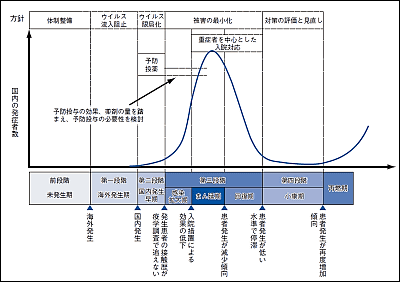
There are many other things that you should not miss. There are no losses in content, but on the 18 th page "Action 10. Training is carried out" in "2. When spreading in the country (3 rd postmenstrual period)" The assumption scenario has become a content full of reality.
Tenth day after the occurrence of the first patient in the country. A prevalence of the H1N1 influenza has already been reported in the area of your medical institution, prefectures also announced the government that it has already entered the third phase of postponement. There are reports that about 5% of the population is infected.
Currently, 20% of medical institution's beds are infected with H1N1 influenza.
Both doctors, nurses, and administrative staff are about 70% of the usual number. Some of the staff seem to have been infected. Society is in a state of panic, and phone calls for consultation are ongoing to medical institutions as well. There are also several dead people, making it difficult to secure places to rest. (Please refer to the postponement of 6 pages for the situation of society).
Discuss what medical institutions will consider from this stage in this situation.
In addition, the following Q & A etc are useful to know the information so far, information is gathered together.
Q & A on swine flu (for health centers) (provisional version) (PDF: 108KB)
Provisional guidance on infection control in clinical practice of patients who are confirmed or suspected to be infected with swine influenza A (H1N1) virus in medical facilities
(Guidance by the US Disease Control Center: provisional translation) (PDF: 211KB)
US Centers for Disease Control on Swine Influenza Virus (H1N1) Q & A (PDF: 178KB)
■ National Institute of Infectious Diseases
On the following official website, the National Institute of Infectious Diseases is summarizing the number of confirmed cases and the like regarding the new type of influenza, it is possible to grasp where and how many cases occur in the world, and further official announcement of WHO The Japanese translation is also published at any time from time to time.
National Institute of Infectious Diseases Research Center for Infectious Diseases
http://idsc.nih.go.jp/disease/swine_influenza/index.html
■ WHO (World Health Organization)
Information on whether the current pandemic alert, in other words Phase 5 or Phase 6, is published at the following site.
WHO | Current WHO phase of pandemic alert
http://www.who.int/csr/disease/avian_influenza/phase/en/index.html
Also, if you can not wait until the official announcement is translated into Japanese, you can check the original sentence from the following site.
WHO | Swine influenza
http://www.who.int/csr/disease/swineflu/en/index.html
Ministry of Foreign Affairs
Information on infectious disease risk information is updated from time to time on the following page. When going overseas trip it is quite helpful.
MOFA Overseas Security Website
http://www.anzen.mofa.go.jp/
In addition, infectious disease risk information of each country where an infected person comes out can be listed on the following page.
Ministry of Foreign Affairs Overseas Safety Website // Infectious Disease (SARS · Avian Influenza, etc.) Related Information
http://www.anzen.mofa.go.jp/kaian_search/sars.asp
In addition, when it says that you may have been infected with a new type of influenza at overseas travel destination, it is pretty good information on which medical institution you should contact.
Ministry of Foreign Affairs Overseas Safety Website // birds in each country / region · designated influenza-designated medical institution / main medical institution
http://www.anzen.mofa.go.jp/kaian_search/medical.html
Prime Minister's Office
On the following pages, it is possible to grasp what kind of policy the Japanese government will devise about this new type of influenza. It is getting to know that "What is the government doing?"
Government's response situation on the occurrence of new type of influenza overseas
http://www.kantei.go.jp/jp/kikikanri/flu/swineflu/index.html
Ministry of Agriculture, Forestry and Fisheries
The page of the Ministry of Agriculture, Forestry and Fisheries that insisted that pork was safe, rebounding strongly against the name of the original "swine flu", unlike the previous ministries and agencies, summarizes the countermeasures that can be done by quite concrete individuals I will.
Ministry of Agriculture, Forestry and Fisheries / measures against H1N1 influenza
http://www.maff.go.jp/j/zyukyu/anpo/influ.html
In particular, although the following two have been published before, it is recommended that it describes in detail how to act and details to be stocked are specifically enumerated, so it is recommended. Or, I am very concerned about the world map of the front cover of 'Household grocery stockpile for new strain of influenza'.
New influenza countermeasures guidelines for individuals, families and communities (PDF: 491KB)
Household grocery stockpile guide for new type influenza (PDF: 1,889KB)
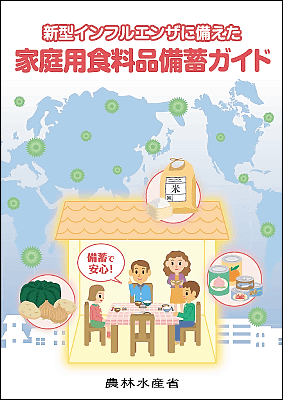
■ Other
US Centers for Disease Control, abbreviated CDC's official websiteThen,RSSInformation delivery by mail · Update notification by email ·TwitterInformation sharing using video, podcasts, etc. are being provided. Because the information is very substantial, we are now able to obtain the minimum necessary information quickly and collectively.
In addition, BBC creates and publishes a timeline that will give you a good idea of how people with H1N1 influenza are occurring and spreading on a daily basis on the following pages. Red squares confirmed infection, black squares are definite of death.
BBC NEWS | Americas | How swine flu has spread
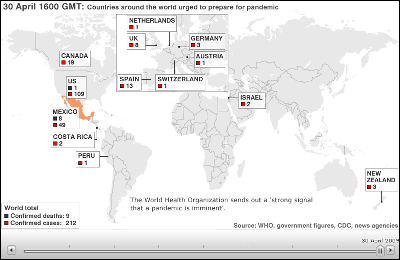
After that, if you look at the following page where you sorted the results of searching "influenza" in Google News by the date, you can keep up to date news of each news organization.
Influenza - Google News
Related Posts:
in Note, Posted by darkhorse




